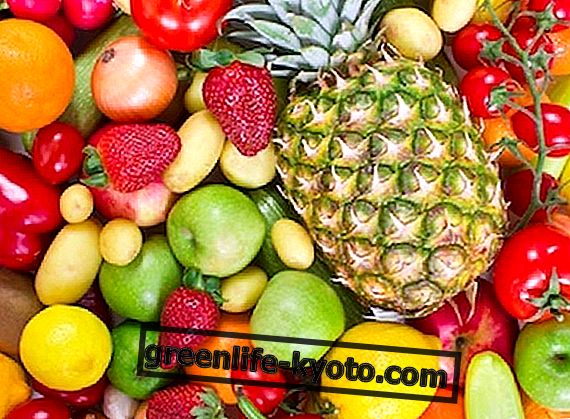
Vegetarians: what to have at home
The pantry and refrigerator of the self-respecting vegetarian is good that they always have stock of ingredients to make vegetarian second courses. These dishes do not require much elaboration, they are not complex, but they require only a hint of imagination, inspiration and creativity. Fortunately, vegetarian cooking also stimulates this part of us, which is sometimes a little sleepy!
Therefore, among the shelves, to develop good vegetarian second courses, it is important to have: instant preparation for seitan, dehydrated granules or flakes soja, rice waffles for rolls, lentils, beans, soy, legumes in general, cereals ( oats, barley, spelled, wheat, millet ), eggs, tofu, tempeh, fresh or aged cheeses, vegetable milk (soya or rice), animal milk (goat or cow), dehydrated mushrooms, lots of spices, seeds, nuts and always lots of vegetables .
Vegetarian second courses: some practical examples
Here is a simple summary of what can be prepared as a second vegetarian dish:
- Second vegetarian egg- based: in this case you can safely indulge in the classic omelettes, omelettes, scrambled eggs, boiled or soft-boiled. Or they can also be used to make vegetable and cereal meatballs. In short, they can become protagonists of the main courses, accompanied by imaginative salads or mixed vegetables and steamed ratatouille.
- Vegetarians based on wheat and soya derivatives : with tempeh and tofu, which can be purchased ready, but above all with dehydrated soy and home-made seitan, you can prepare delicious steaks and vegetarian meatballs, roasts and stews, kebabs, veg-burger, veg meat on the plate, in various sauces, of mushrooms for example, rather than pizzaiola or other. Here you can experiment with different cuisines, considering these preparations with high protein value, just like meat substitutes in recipes.
- Vegetarian second courses based on vegetables : with rice wafers (available in Chinese shops or even in some supermarkets) you can prepare delicious seasonal vegetable rolls. Just scald the waffles in boiling water or steam, and you can fill, for example, with cabbage or cabbage, carrots and courgettes in strips, peas, steamed in the appropriate bamboo baskets and seasoned with soy sauce.
- Second course vegetarians based on cereals : in this case you can take advantage of the bonding power of the same given by the starch, even here you can prepare oatmeal balls, barley, millet, just adding seasonal vegetables and a couple of eggs and then cook them baked with spices, nuts and seeds of all kinds.
- The cheese, fresh, seasoned, spreadable or to melt, can finally be combined in a thousand ways and become an excellent second vegetarian, accompanying vegetables and fruit in simple but rich and nutritious dishes.
A little trick: for convenience, especially when preparing large quantities of seitan and soy (meatballs and veg steaks, for example), remember that you can also freeze these vegetarian second courses in the freezer and use them at the right time!
Discover all
properties, nutritional values and recipes with seitan
Tempeh, how to prepare it












